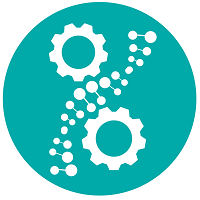Manufacturing & Analytical Characterization
Apply Various Model Systems for Comprehensive Risk Assessment of Aggregates
Wednesday, October 23, 2024
9:30 AM - 10:00 AM MT
Location: 155 F

Cathie (Dong) XIANG, Master (she/her/hers)
Principal Scientist
Amgen Inc
Thousand Oaks
Speaker(s)
Background and
Purpose: There is concern that subvisible aggregates in biotherapeutic drug products pose a risk to patient safety. We investigated the threshold of biotherapeutic aggregates needed to induce immunogenic responses.
Methods and
Results: Highly aggregated samples were tested in cell-based assays and induced cellular responses in a manner that depended on the number of particles. The threshold of immune activation varied by disease state (cancer, rheumatoid arthritis, allergy), concomitant therapies, and particle number. Compared to healthy donors, disease state patients showed an equal or lower response at the late phase (7days), suggesting they may not have a higher risk of responding to aggregates. Xeno-het mice were used to assess the threshold of immune activation in vivo. Although highly aggregated samples (~ 1,600,000 particles/mL) induced a weak and transient immunogenic response in mice, a 100-fold dilution of this sample (~ 16,000 particles/mL) did not induce immunogenicity. To confirm this result, subvisible particles (up to ~ 18,000 particles/mL, containing aggregates and silicone oil droplets) produced under representative administration practices (created upon infusion of a drug product through an IV catheter) did not induce a response in cell-based assays or appear to increase the rate of adverse events or immunogenicity during phase 3 clinical trials.
Conclusion: The ability of biotherapeutic aggregates to elicit an immune response in vitro, in vivo, and in the clinic depends on high numbers of particles. This suggests that there is a high threshold for aggregates to induce an immunogenic response which is well beyond that seen in standard.
Purpose: There is concern that subvisible aggregates in biotherapeutic drug products pose a risk to patient safety. We investigated the threshold of biotherapeutic aggregates needed to induce immunogenic responses.
Methods and
Results: Highly aggregated samples were tested in cell-based assays and induced cellular responses in a manner that depended on the number of particles. The threshold of immune activation varied by disease state (cancer, rheumatoid arthritis, allergy), concomitant therapies, and particle number. Compared to healthy donors, disease state patients showed an equal or lower response at the late phase (7days), suggesting they may not have a higher risk of responding to aggregates. Xeno-het mice were used to assess the threshold of immune activation in vivo. Although highly aggregated samples (~ 1,600,000 particles/mL) induced a weak and transient immunogenic response in mice, a 100-fold dilution of this sample (~ 16,000 particles/mL) did not induce immunogenicity. To confirm this result, subvisible particles (up to ~ 18,000 particles/mL, containing aggregates and silicone oil droplets) produced under representative administration practices (created upon infusion of a drug product through an IV catheter) did not induce a response in cell-based assays or appear to increase the rate of adverse events or immunogenicity during phase 3 clinical trials.
Conclusion: The ability of biotherapeutic aggregates to elicit an immune response in vitro, in vivo, and in the clinic depends on high numbers of particles. This suggests that there is a high threshold for aggregates to induce an immunogenic response which is well beyond that seen in standard.
Learning Objectives:
- Understand overall risk criticality of subvisible aggregates in biotherapeutics.
- Conduct their own risk assessment of CQAs through in vitro and in vivo experiments
- Come up their own strategy to define and assign proper risk category of biotherapeutic attributes during process development and optimization

